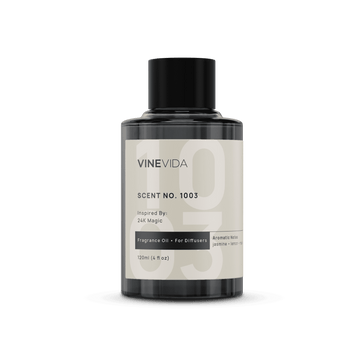Scientific Name: Copaifera Officinalis
Origin: Brazil
Plant Part: Resin
Scent: Sweet, Woody, Resinous and Earthy
Color: Light Yellow
Consistency: Medium
Perfumery Note: Base
Initial Aroma Strength: Medium
Extraction Method: Steam Distilled
Copaiba Balsam Essential Oil: Uses, Benefits, and Blends
Copaiba balsam essential oil may be one of the most controversial there is. Fraught with conflicting information, this beautiful oil is fabulous for healing pain, but is it everything people are saying it is?
Copaiba (pronounced Cop-ah-ee-bah) is rich in sesquiterpenes, large molecules that have richly relaxing properties. But what are some of the other secrets hidden in Copaiba essential oil? Let’s sneak a peek at the chemistry.
Copaiba Balsam Essential Oil Benefits: Component Breakdown
- B-Caryophyllene - For a deep dive into beta caryophyllene’s properties see below.
- a-Copaene - In nature, it is a powerful aid to the tree's reproduction being a major attractant of the Mediterranean fruit fly. In vitro studies suggest it may offer antioxidant benefits for humans.
- delta-Cadinene - One of the most fascinating molecules of the plant kingdom, delta-cadinene has been proven to disrupt the larval stage of the mosquito species Aedes Aegypti, potentially meaning it could be used as an antimalarial agent. In vitro studies suggest it may prevent the growth of human ovarian cancer cells.
- Gamma-Cadinene - Yet another sesquiterpene to add to the deeply relaxing nature of copaiba essential oil.
- Cedrol - In vitro, studies prove cedrol to have anti-inflammatory, antispasmodic, antiseptic astringent, diuretic, sedative, insecticidal, antifungal and tonic properties.
Historical Uses of Copaiba Balsam Essential Oil
Essential oils: A Comprehensive Handbook For Aromatic therapy, Jennifer Peace Rhind lists historical uses of Copaiba essential oil as:
- Gonorrhoea
- Bronchitis
- Pains in general
- Back pain
- Injury
- Blennorrhagia (discharge from the urethra)
- Leucorrhea (Vaginal discharge)
- Psoriasis
- Catarrh of the bladder
- Wounds and as an antiseptic for wounds
- Skin ulcers
- Aching joints
- Ovarian cysts
- Uterine myoma (fibroids)
- Weak uterus
- Vagina discharge
- Ovarian problems
- Ulcers
- Sore throat
- Uterine infections
- General inflammations
- As a tonic and to treat ulcers and other digestive diseases
- Cancer
- Leishmaniasis (parasitic infection)
You are most likely to discover copaiba essential oil benefits touted as a non-psychoactive alternative to cannabis medicines, so let’s look at why that might be first, then it will help you understand more about the different things copaiba balsam essential oil can do.
In the 1990s, scientists discovered we have a second endocrine system, and they named it the Endocannabinoid System. They gave it this name because one of the receptors, the CB1 receptor, presented itself by acting in response to THC, the psychoactive component of cannabis.
What Is The Endocannabinoid System?
Our nervous system is made up of two parts, an electrical system that sends pulses along nerves and a chemical system. These chemicals are called neurotransmitters and the body uses them to jump across spaces between the nerves. These spaces are called synaptic gaps or synaptic clefts. The chemicals that cross the synaptic gap are called neurotransmitters. The ones we commonly recognize are dopamine, serotonin, GABA, glutamate, but in fact, there are around 100 different neurotransmitters.
How Does the Endocannabinoid System Work?
Neurotransmitters are dispatched from the presynaptic to the postsynaptic nerve. In other words, the pre-synaptic is the one before the gap, and the postsynaptic one is the one that is supposed to catch the neurotransmitters on its receptors and send them on the rest of their journey, to and from the brain.
What Does The Endocannabinoid System Do?
The endocannabinoid system has been discovered to be the volume control for the system. So, if there is too much of the excitatory neurotransmitter glutamate running through the body, this can create pain, agitated thinking, aggression, poor memory, amongst other problems. It is up to the receptors on the postsynaptic nerve to say “No thank you, we have enough of that now.” In the same way “Please can I have some more GABA to make me feel calmer, serotonin to make me feel happier and a bit less in pain, or some more dopamine so I can be a bit more motivated to kick ass”.
The endocannabinoid system is a vitally important system, which is also very delicate and can be affected by many things including diet and trauma.
Copaiba Essential Oil and The Endocannabinoid System
It comprises two main receptors, the CB1 and CB2 receptors (Cannabinoid 1 & 2)
The CB1 receptor controls, appetite, weight gain, memory, itching, and pain.
The CB2 receptor controls pain, inflammation, and immunity.
So, imagine these neurotransmitters going over the gap, when they reach the postsynaptic nerve, they seek out a receptor, so they can enter the neural cell. Any chemical that acts as a key for the receptor on the cell is called a ligand. A ligand that activates a receptor is called an agonist. One that switches it off or down is called an antagonist.
The system does have its own endogenous ligands, that is ones that are made in the body:
- N-arachidonoylethanolamine (AEA) - also known as anandamide.
- 2-arachidonylglycerol (2-AG)
However, there are some ligands found in plant medicines, in particular, in cannabis. Sadly, cannabinoid molecules are hydrophobic. Their distaste for water means they will not pass through distillation and as such are not found in essential oils, even hemp essential oils.
THC is the main ligand that activates the CB1 receptor. You can see why veterans would find it useful to use medical marijuana to help with their PTSD. It activates the CB1 receptor helping them to process long-term memories and pain.
Copaiba Essential Oil and The CB2 Receptor
Copaiba essential oil is of interest in this field because it is high in a constituent called β- caryophyllene which is known to be a weak agonist of the CB2 receptor. We call this a cannabimimetic, meaning it isn’t a cannabinoid, but to all intents and purposes, it does act like one.
That means that when copaiba balsam essential is used in a topical application, it absorbs through the skin, into the bloodstream, and circulates around the system. The β-caryophyllene acts as an agonist upon (that is, it switches on ) the CB2 receptor, instructing the gears to start moving to switch down inflammation and pain, and to switch up immunity.
Copaiba Balsam Essential Oil Vs CBD Oil
Now, some agencies suggest that this means that it would be an effective substitute for cannabis medicines, but this is not so. Specifically, it has no action on the CB1 receptor and only a mild action on the CB2 receptor. To clarify too, cannabidiol, a major component of CBD oil, also has a (stronger) direct action on the CB2 receptor and an orthosteric action on the CB1 receptor. This means it has a kind of back door access that works differently to THC, switching it up and down.
Copaiba is not a substitute for CBD oil, (and certainly not for medical marijuana) but it does make a tremendous supplementation, making the endocannabinoid system work harder than it would otherwise.
Therefore primary copaiba balsam essential oil uses are pain, immunity and inflammation.
Where Does Copaiba Essential Oil Come From?
However, this only addresses one component of the oil, and in fact, the copaiba tree has been revered for hundreds of years in South America for its physical healing but also its emotional and mental attributes.
But before we get to those, let’s just talk a little bit about the tree itself, because it is a very valuable and useful resource. Copaiba balsam essential oil is made from the oleoresin of the tree, which is a technical way of saying you can tap it a bit like you draw off maple syrup. The tree manufactures so much of it, naturally, that it begins to look pregnant with it. Tapping the tree, as long as it is done carefully, is helpful to the tree’s infrastructure. Providing there has been adequate rain, then the tree will make the oleoresin. To an industry that impacts heavily on forestation, this is an important and sustainable crop.
Another Peek at the Historical Uses of this Oil
When early settlers reached Columbia in the 1500s, they brought copaiba back and it became one of the major treatments in European apothecaries treating genito-urinary conditions in particular, as well as discharges, chronic wounds and ulcers.
There is an interesting correlation between those uses and what β - caryophyllene is for in the plant.
A study into reasons why corn harvests fail revealed some fascinating data on the chemical. The ecology surrounding the roots of maize plants was observed and it was seen that a small weevil feasted on them, compromising the integrity of the plant. The maize responded by using its secondary metabolites (the parts that turn into essential oils ) to summon an army of insects. The plant manufactured β-caryophyllene and poured it into the soil, to which insects came and ate the weevils. The insects, having enjoyed a feast, turned and left the maize in peace to let its roots recuperate.
Oils high in β-caryophyllene such as helichrysum, black pepper, and copaiba balsam essential oil all seem to have this same action of nurturing souls that are completely broken, and encircling them with an invisible ring of protection until they are able to get back on their feet.
The indigenous peoples of South America use copaiba as a means of bringing joy, or lifting the spirits and feeling happier in life, particularly after times of trauma.
Copaiba Balsam Essential Oil Uses: For Wholesale Purposes
Copaiba Balsam Essential Oil for Aromatherapists
This oil has a particular affinity for the genito- urinary system and is featured highly in the European pharmacopeia in treatments for gonorrhea, and other genital complaints, especially with discharges. It is indicated for itching and burning conditions in this area such as vaginitis and cystitis. Likewise, it has been used historically for urge incontinence and leakages.
Fundamentally though, copaiba is best used for pain and, like helichrysum, myrrh and galbanum essential oils, for ulcers and wounds that will not heal.
Copaiba Balsam Essential Oil Benefits for the Cannabis Industry
Copaiba balsam essential oil smells beautiful and its wide collection of sesquiterpenes adds further support to CBD products.
Copaiba Balsam Essential Oil Blends: DIY Recipes
Massage Blend for Cystitis
- 10 ml Grapeseed Carrier Oil (Vitis Vinifera)
- 5 drops Tamanu Carrier Oil (Calophyllum Inophyllum)
- 2 drops Copaiba Balsam Essential Oil (Copaifera Officinalis)
- 1 drop Cypress Essential Oil (Cupressus Sempervirens)
- 1 drop Bergamot FCF Essential Oil (Citrus Bergamia)
Safety: Not suitable for use in the first 16 weeks of pregnancy.
Massage Blend for Bronchitis
- 10 ml Grapeseed Carrier Oil (Vitis Vinifera)
- 5 drops Tamanu Carrier Oil (Calophyllum Inophyllum)
- 3 drops Copaiba Balsam Essential Oil (Copaifera Officinalis)
- 2 drops Eucalyptus Essential Oil (Eucalyptus Globulus)
- 3 drops Ravensara Essential Oil (Ravensara Fragrantica)
- 3 drops Tea Tree Essential Oil (Melaleuca Alternifolia)
Method of Use: Use on the chest and back, or only on the back of children. Up to five times a day.
Safety: Not suitable for use during the first 16 weeks of pregnancy. Not suitable for use on children under 6.
Massage Blend for Arthritis
- 10 ml Grapeseed Carrier Oil (Vitis Vinifera)
- 5 drops Tamanu Carrier Oil (Calophyllum Inophyllum)
- 2 drops Copaiba Balsam Essential Oil (Copaifera Officinalis)
- 5 drops Lavender Essential Oil (Lavandula Angustifolia)
- 3 drops Juniper Essential Oil (Juniperus Communis)
Safety: Not suitable for use during pregnancy. Since juniper is a strong diuretic, use it with care if there are kidney issues.
Why Choose VINEVIDA?
At VINEVIDA, we love botanicals and the planet they come from. We believe in stocking the best at affordable prices and supplying to the discerning, which is why we are also members of both the Alliance of International Aromatherapists and the National Association of Holistic Aromatherapy. In recognition of our excellent standard of product, we are proud to hold a 2021 Certificate of Registration as a Cosmetic Products Establishment with the U.S. Drugs and Food Administration.
Our joy at seeing people make beautiful things means we stock from the smallest amounts to the largest. Our wholesale essential oil prices begin with our smallest carrier oil of 120ml to our largest of 396lb, meaning any manufacturing company can afford to stock as many or as few oils as their business can accommodate without running the risk of spoilage of some of nature’s most precious commodities. Why not see if you can save money by buying your copaiba balsam essential oil in bulk? Remember how stable it is proven to be, so as long as you store it carefully, it should last and last.
Don’t forget too, we like to look after our customers with reasonable prices and excellent customer service and reward the loyal ones with money-off discounts over the year.
Flash Point
98° C
Conclusion
Why not check out if you qualify for our loyalty scheme and start saving today with an environmentally friendly choice of oil for skin, hair, massage oils, and soap making.
Click to add VINEVIDA Copaiba balsam essential oil to your cart today.

- Reviews
- Questions
We love it
Product worked as described. Aroma was strong before we mixed it but no complaints. We love it!
Copaiba Balsam is a new fav for me
Such a warm and beautiful scent. I didn't know what to expect so I am pleasantly surprised at how wonderful and pure it smells. I ordered the sample just to try it out but I will be ordering a larger amount.
The best quality I’ve discovered
The best quality I’ve discovered. The smell of this oil is heavenly ! I tried this from another company and it smelled horrible. Don’t buy rancid oils folks , buy vinevida!
You may also like
Recently viewed

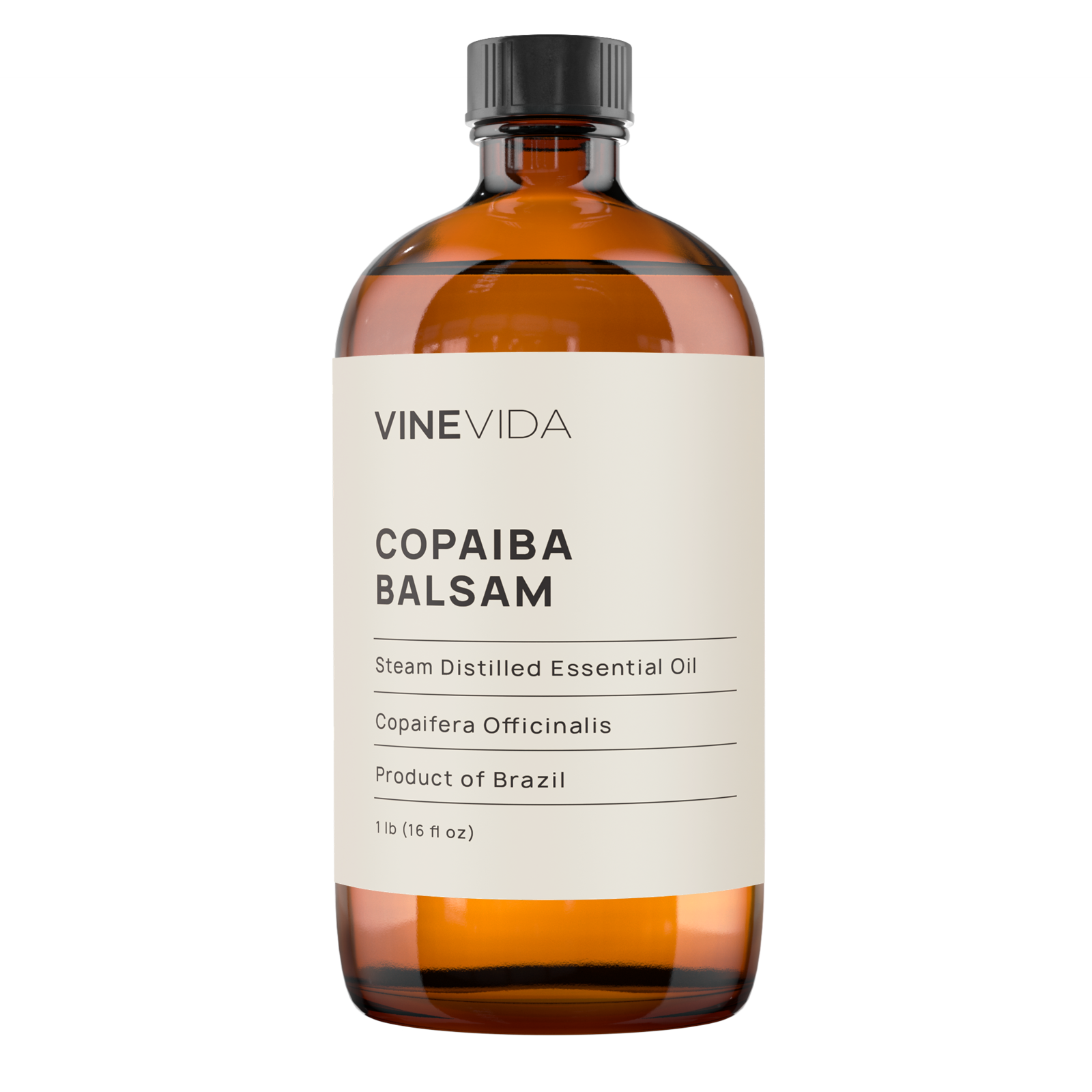
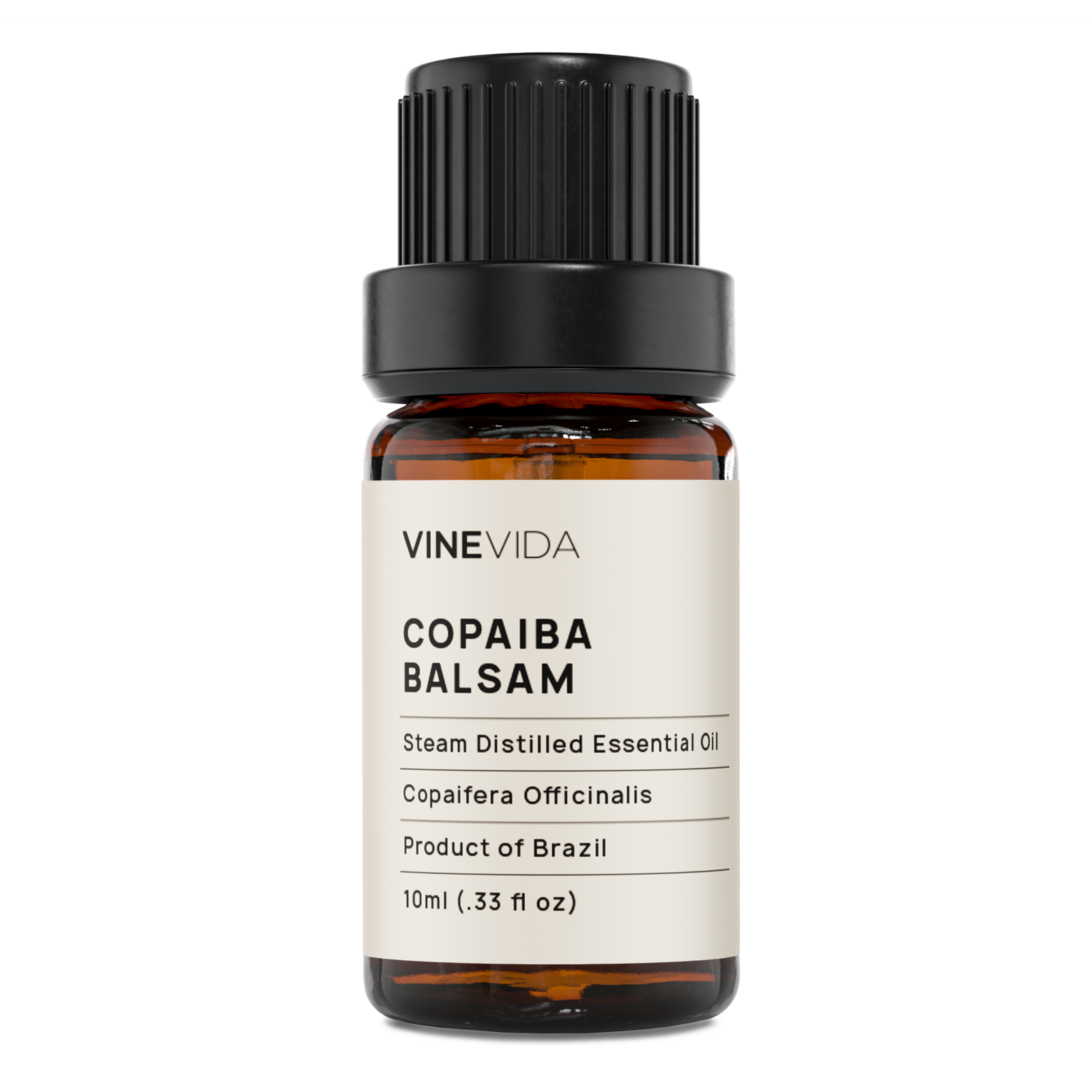
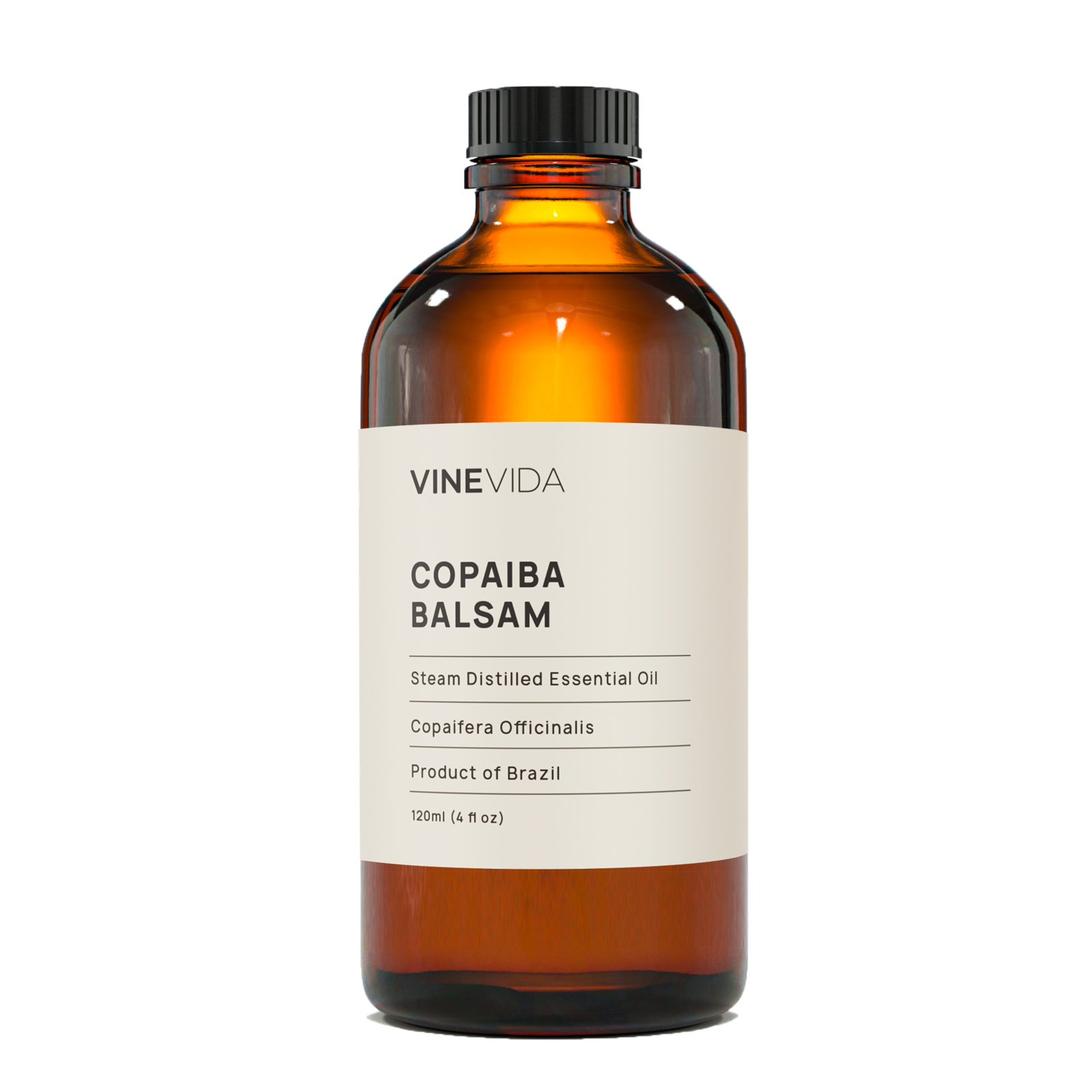
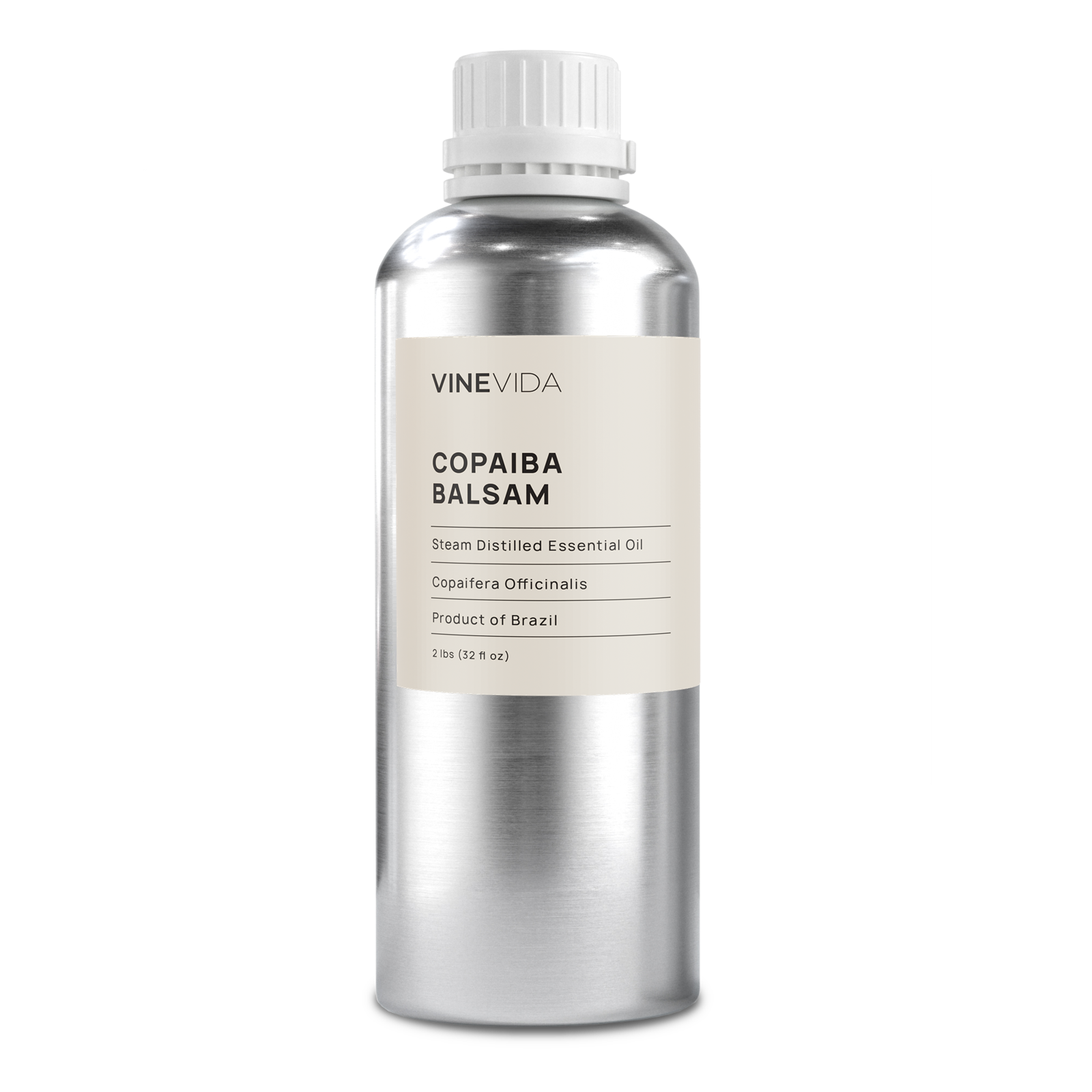
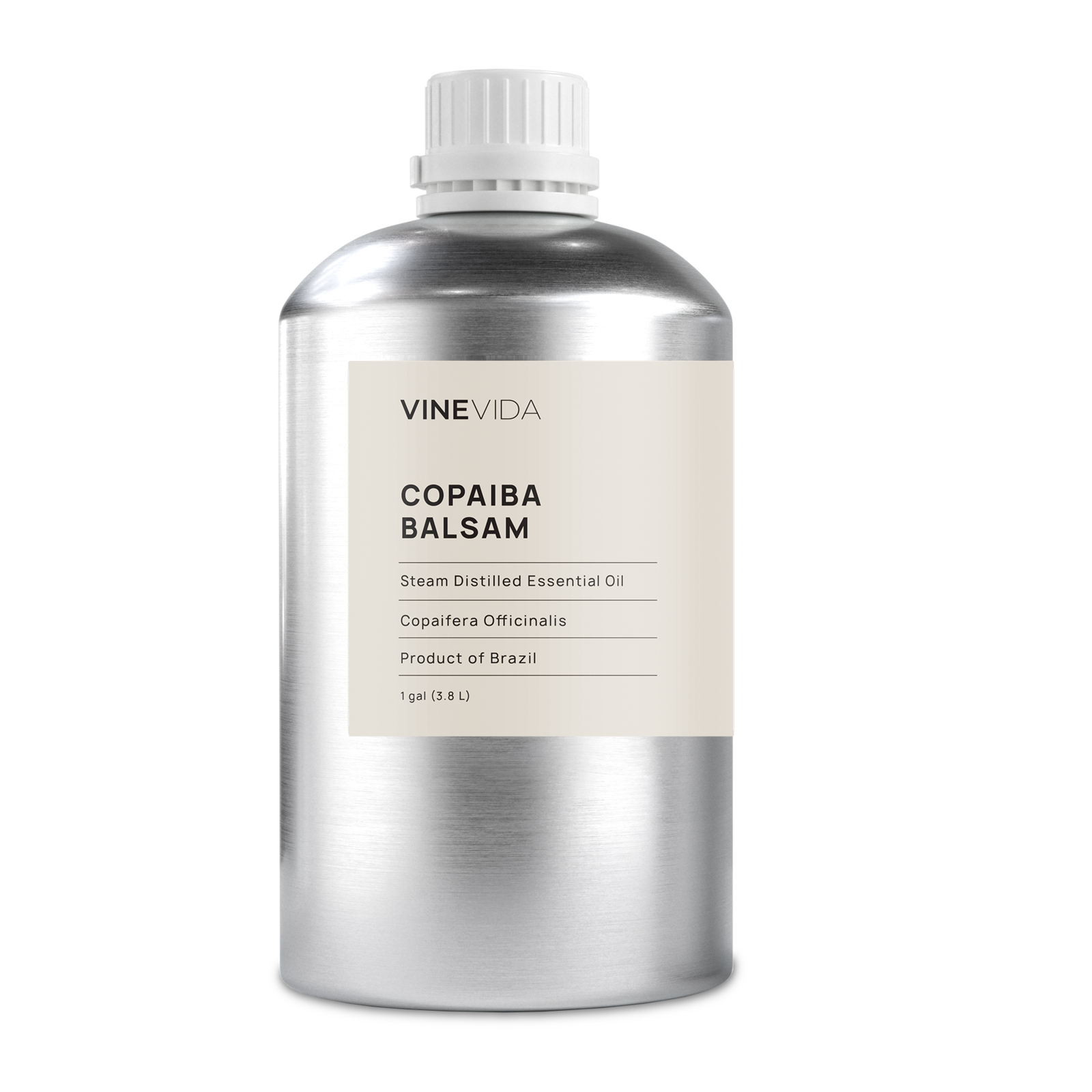
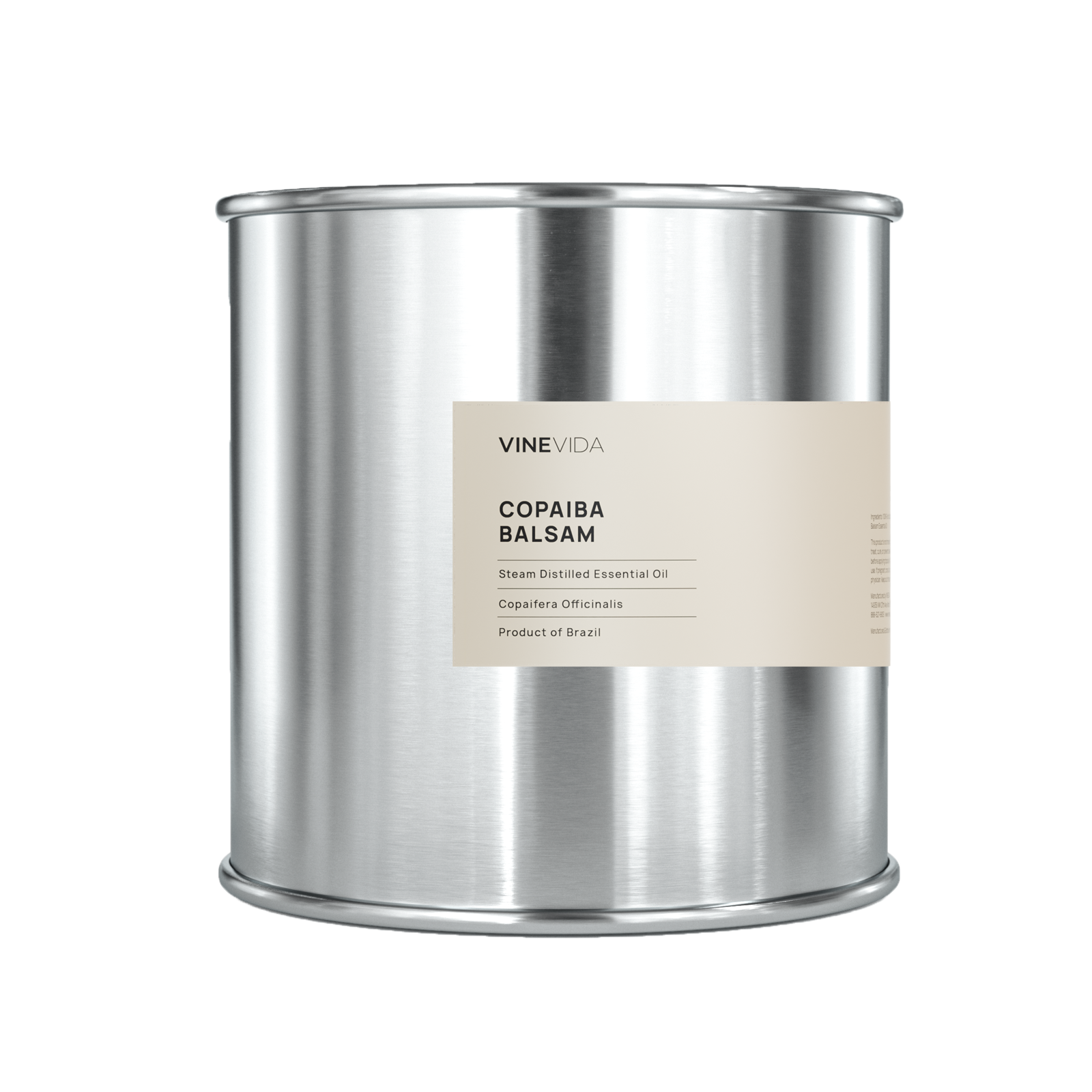
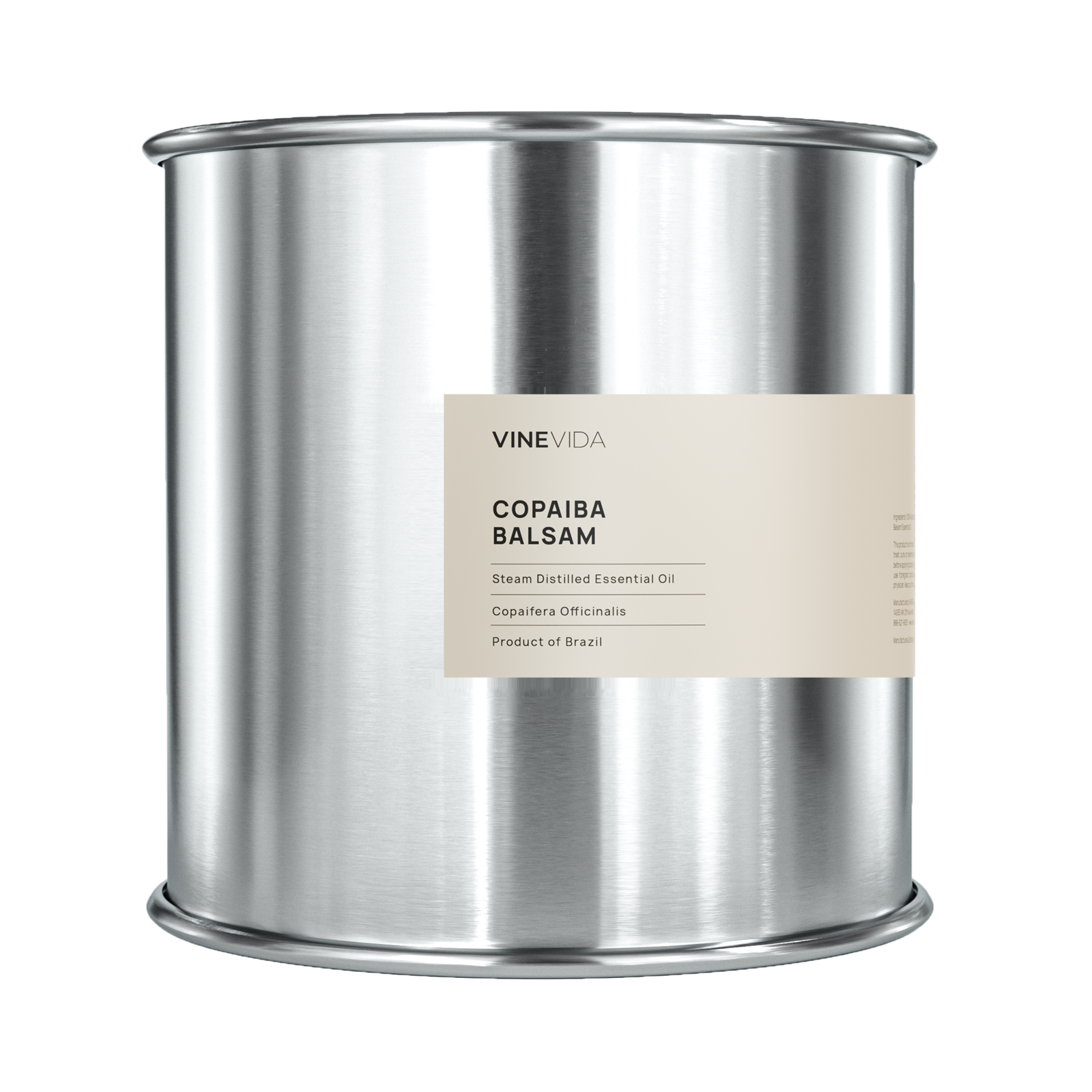





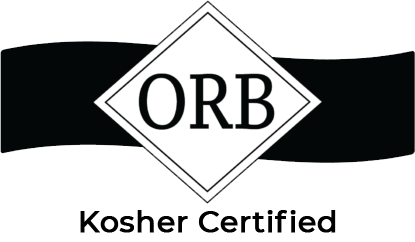
 IFRA Statement
IFRA Statement


















